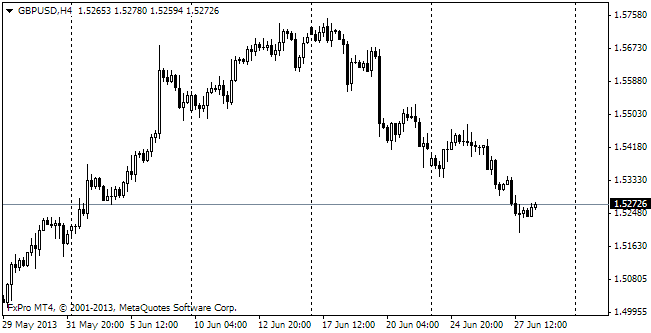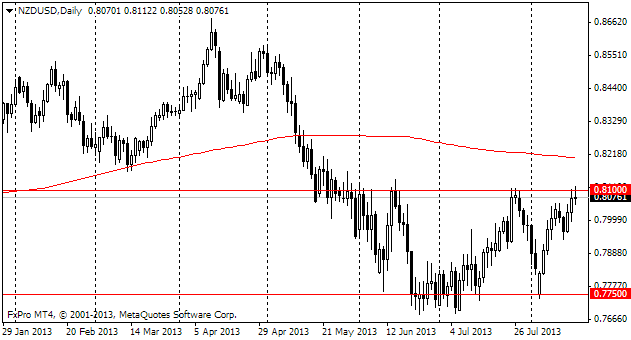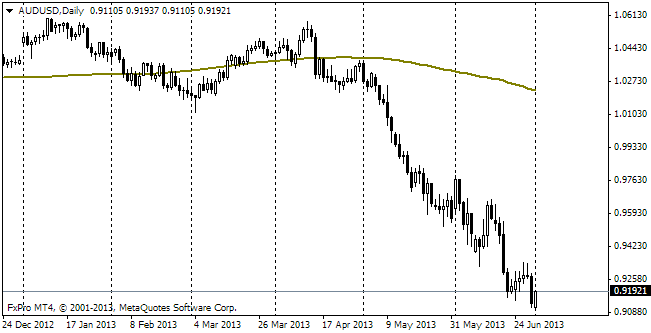EUR/usd
The single currency is helplessly crawling along the bottom of this week's range. Yet it is remarkable that the attempts to send the pair down don't stir due interest among buyers. This morning, for example, for no particular reason and even before the release of PMI stats eurusd was pushed down to 1.3437, that is 20 pips below the daily open. Supposing that technically the pair will target at the support level near the preceding local low, we can expect a reversal only near 1.3290. It means that bears have a figure and a half in store. However, we can hardly expect full-scale decline before the announcement of the Fed's decision on QE and the rate. It is quite possible that by that moment the market will have slid below 1.33 to find support there. The preliminary PMI estimate for the eurozone proved to be better than expected, especially in Germany. It should be mentioned that this country's statistics seemed to be under great threat due to the close business connections between Germany and sanctioned Russia. Now we see relative steadiness of the German economy, though it will scarcely last for long.
GBP/USD
The British pound also remains within the downtrend. Yet, our old range is getting under higher and higher pressure. The chances that bears will trigger stop orders are growing. They will be especially high should 1.70 be broken. In the meantime, trading is held at quite a distance from this level, 40 pips away from it. Actually the market can easily cross this distance, but the problem is that in the recent months volatility has been low and such moves are caused only by significant deviations of statistics from expectations.

NZD/USD
The New Zealand Kiwi tumbled down on the words of the RBNZ's President that the currency was at unreasonable and unsteady levels. Besides, the comments of Graeme Wheeler reflected an obvious intention to make a pause in the cycle of the monetary policy toughening and see the economy adjusting to the current higher interest rates. As you remember, since the beginning of the year there have been 4 increases, and the rate has grown from 2.5% to 3.5%. The Kiwi has lost about 1.5% and keeps decreasing even now. Actually, the Kiwi's strength is accounted for by economic growth (this year the Bank expects GDP growth of 3.7%), four rate increases since the beginning of the year (the major CBs either eased their policies or kept purchasing assets to their balance sheets). Anyway, we should consider what the CB's governor really means rather than pay attention to the reasoning. In this case he pointed out that ahead we have a pause in toughening and high caution regarding the currency rate.

AUD/USD
The Kiwi's neighbour, the aussie, was enjoying favourable statistic data. China, the main consumer of the Australian industrial commodities, reported an increase in the production growth rate in July. The index exceeded the preceding rate (50.7) and expectations (51.2), reaching 52.0, which haven't been seen since January 2013. On this news the Aussie broke off its decline against USD (following the Kiwi) and got to the new three-week high of 0.9470. However, it can't hold there for long. The pair is quite unsteady at these levels and falls under selling pressure. The target of this decline can be set at 0.9330.
